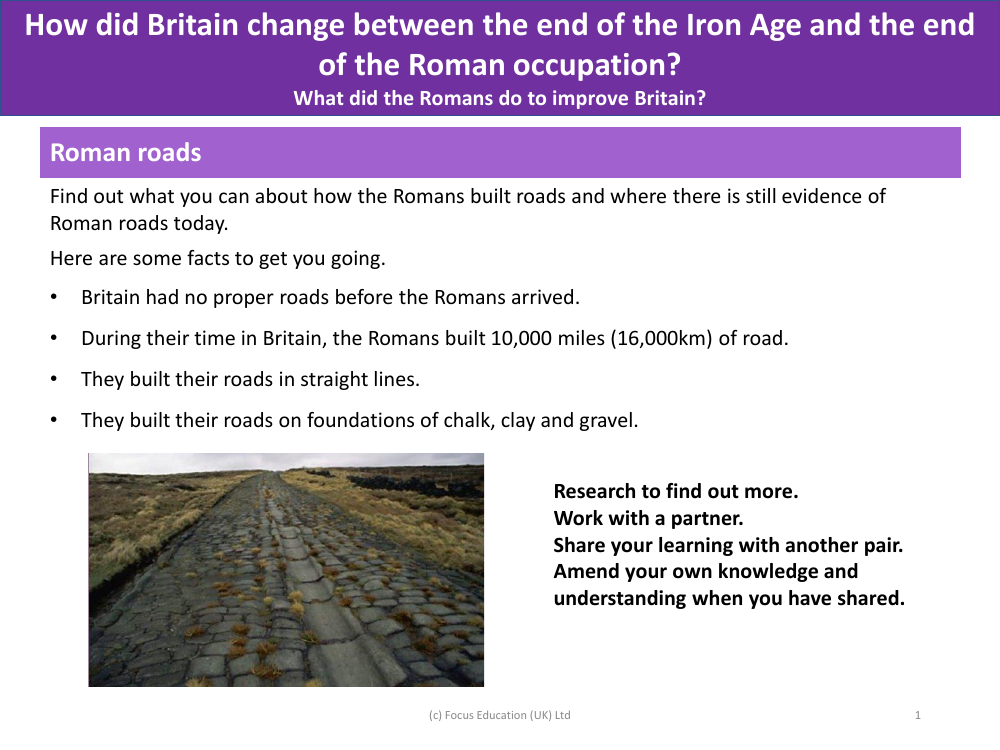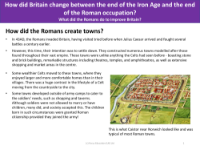Roman roads - Info sheet

History Resource Description
Before the Romans set foot on British soil, the concept of well-constructed roads was virtually non-existent. However, the Roman occupation brought about a revolutionary change in infrastructure with the creation of 10,000 miles (approximately 16,000 kilometres) of roads across Britain. These roads were known for their remarkable straightness, a testament to Roman engineering prowess. The construction process involved laying down solid foundations made from materials such as chalk, clay, and gravel, ensuring the roads stood the test of time. Many of these ancient thoroughfares have left a lasting imprint on the landscape and can still be traced today, serving as historical markers of Roman ingenuity and their contribution to the development of Britain's transport network.
The Roman road network was not only a feat of engineering but also a catalyst for significant change in Britain from the end of the Iron Age to the conclusion of Roman rule. These roads were crucial in connecting Roman towns and facilitating the movement of troops, trade, and communication, effectively transforming the social and economic fabric of the country. To delve deeper into the construction techniques and the enduring impact of Roman roads, one can explore various resources, including informative video clips that provide visual and narrative insights into how these ancient paths were built and how they contributed to improving life in Britain during the Roman era.







